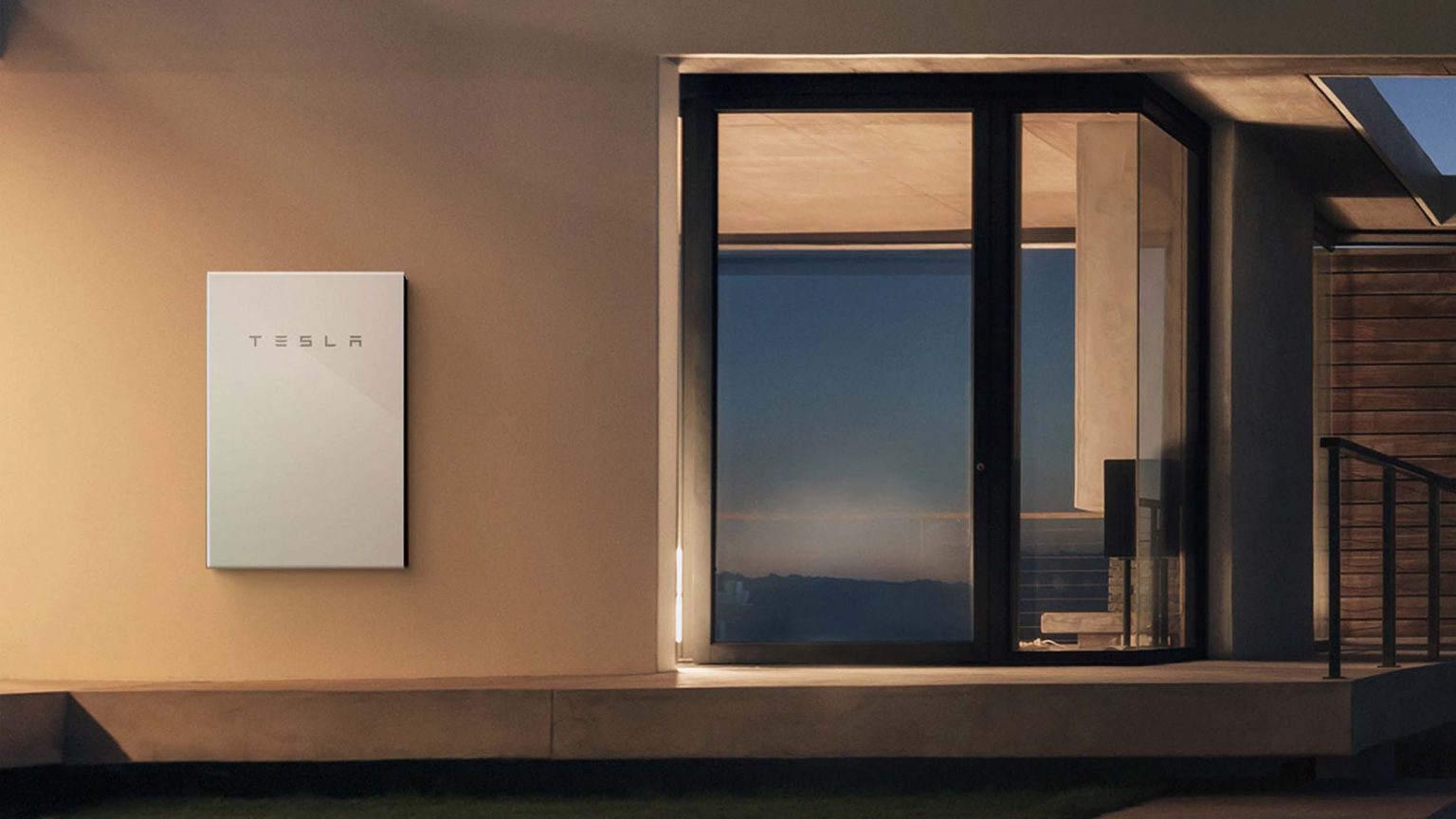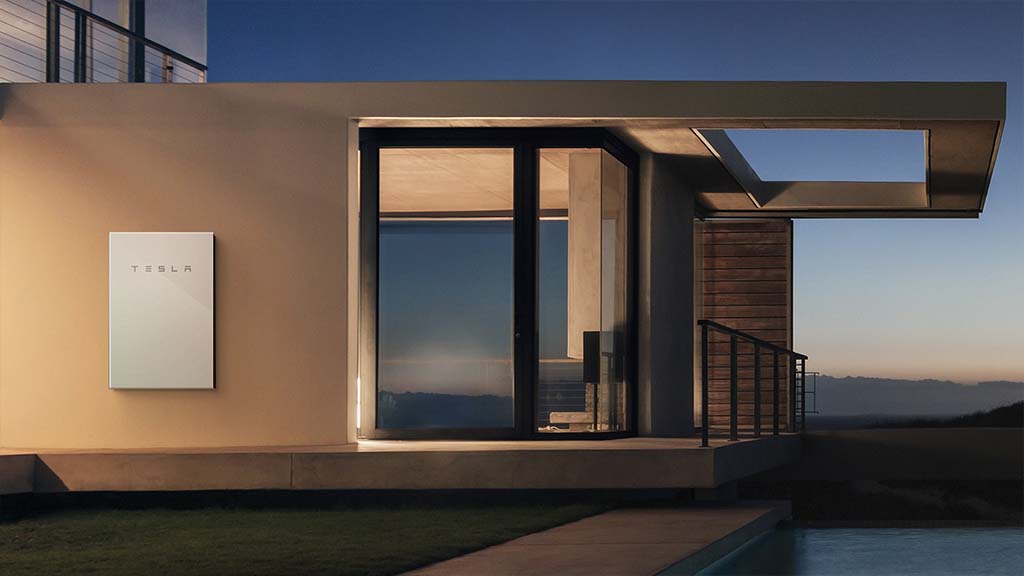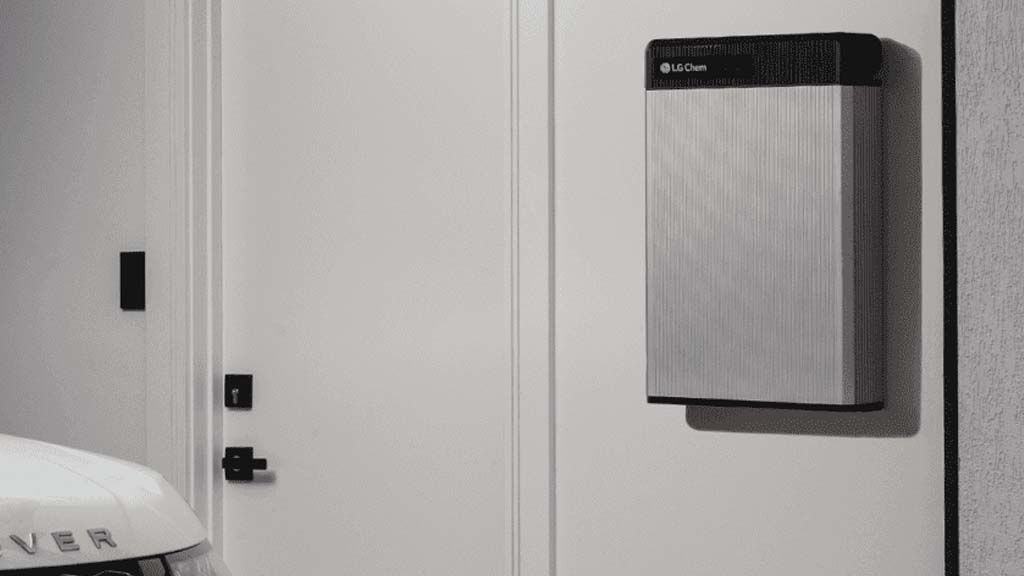
A domestic battery storage system, is charged by your solar panels during the day. To give you a store of energy you can use, to both power your home in the evenings, or when the sun isn’t shining.
“A Battery Storage System acts as a buffer enabling you to maximise the consumption of your solar PV production and means you can power your home and even charge your car at night or when the sun isn’t shining”
Your home battery storage system should be sized in a similar way to your solar PV system. By calculating your night time electricity consumption to give the size of your required battery.
There are many battery storage products that have entered the market over the last 12-18 months. However, there are 2 systems that stand out from the crowd, in terms of quality, rock-solid warranty, and predicted very long-term life expectancy.

The first is the most famous of all battery storage systems – the Tesla Powerwall 2. It offers a huge 13.5kW of usable lithium storage and a simple installation, at a great value price. It also carries the Tesla brand name, which is very desirable to many consumers, earning Tesla the reputation as the ‘Apple’ of the renewable energy world.
Our chief criticism of the Powerwall 2, is that it is only available in one size, that is too large for many UK domestic solar pv systems, and many household consumption requirements. It is also only capable of a max discharge rate of 3.68kW, making it unable to provide the power for households with high peak loads, such as those wishing to charge an Electric car at a faster rate.
The LG Chem Resu range of Lithium batteries, are suitably hi tech in design and quality, and from a highly reputable, experienced and popular manufacturer. Their’s is the closest product to the Tesla in terms of quality and life expectancy. But unlike the Powerwall 2, it is available in several sizes (7kW and 10kW, as well as a smaller 48v 3.3kW version). With both high voltage and 48v versions, allowing flexibility in system design, and more importantly enabling the sizing of the storage system, to suit the needs of the household.
The LG however comes in a variety of sizes to suit all requirements, and is capable of higher discharge rates of 5kW. On the negative side it is ultimately slightly more expensive per kW than the Powerwall.

In summary, the Powerwall is a superb great value product, that is hard to beat if you have a big solar pv system, and a large stored energy requirement. However if you have a high peak consumption household (such as electric car owners) or have a smaller Solar PV panel system, and want a smaller, but still high quality battery storage system, then the LG is the more suitable.
Completely Green Limited is authorised and regulated by the Financial Conduct Authority. Firm Reference number – 790525. We are a broker and not a lender. If you are not happy with the service you have received, you have the right to refer your complaint to the Financial Ombudsman Service.
Please note: Whilst every effort has been made to ensure the accuracy of the used vehicle information and images on this website, some errors may occur. It is important that you do not rely solely on this information, prices or images, and check with us any items that may affect your decision to purchase a vehicle. For an example monthly price, please use the finance calculator on each listing to retrieve a quotation. Representative Hire Purchase Example: Total Deposit: £2000 and Agreement Duration: 48 Months. Representative Personal Contract Purchase Example: Total Deposit: £2000 and Agreement Duration: 48 Months and 8000 miles pa. Representative Personal Contract Hire Example: Total Deposit: 12 months initial rental and 5000 miles pa, and Agreement Duration: 48 Months and Admin Fee: £299. Risk based variable lending rates apply with rates starting from 6.9% APR.